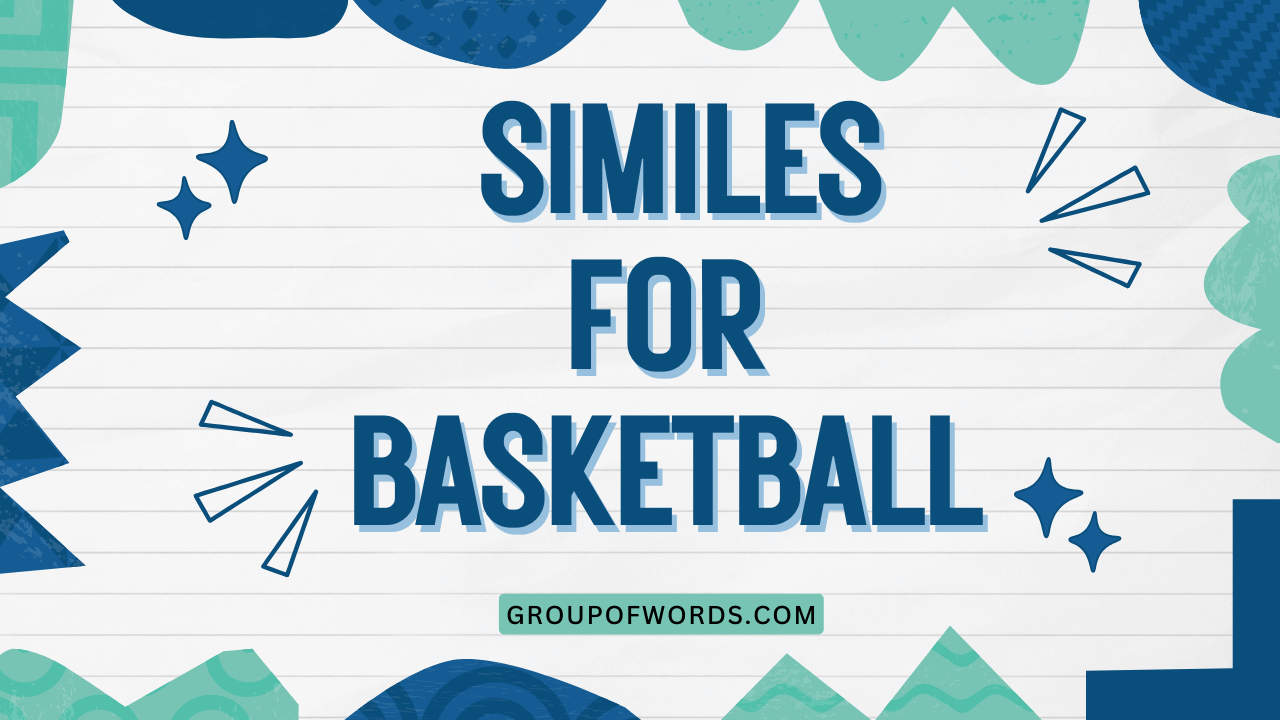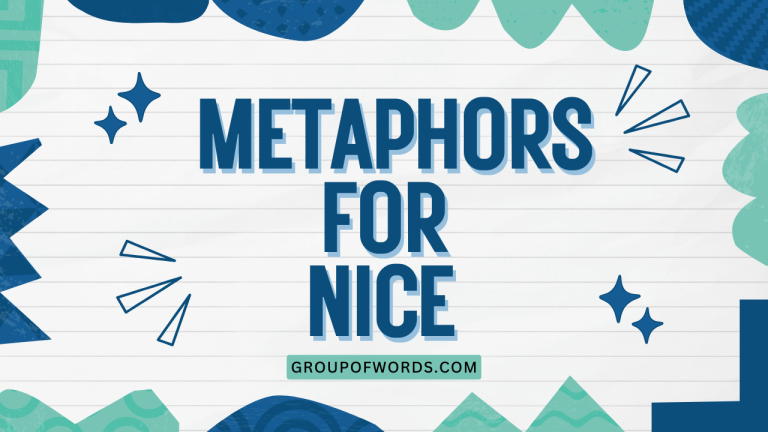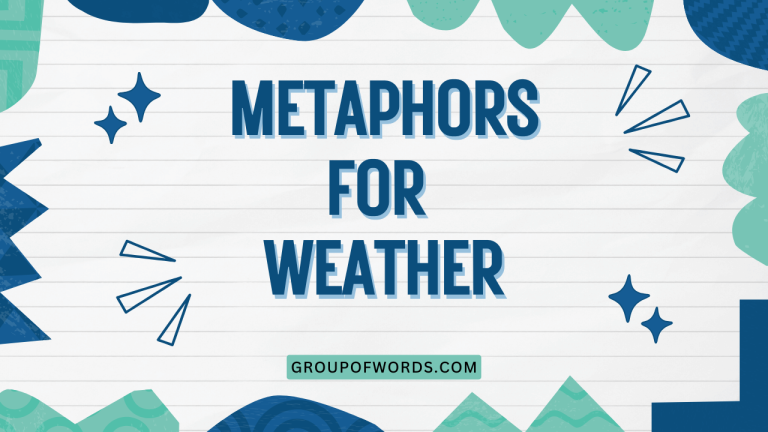Dribbling with Similes: A Guide to Basketball Comparisons
Similes are powerful tools in the English language, allowing us to paint vivid pictures and create memorable comparisons. When applied to the world of basketball, they can bring the game to life, capturing its speed, agility, and excitement in a way that mere description cannot.
Understanding how to effectively use similes not only enhances your writing and speaking skills but also deepens your appreciation for the nuances of the sport. This article is designed for students, writers, sports enthusiasts, and anyone looking to improve their command of English grammar and learn how to craft compelling comparisons.
By exploring various examples and usage rules, you’ll be equipped to use similes to describe basketball in creative and engaging ways.
Table of Contents
- Introduction
- What is a Simile?
- Structural Breakdown of Similes
- Types of Similes
- Basketball Similes
- Usage Rules for Similes
- Common Mistakes When Using Similes
- Practice Exercises
- Advanced Topics in Similes
- Frequently Asked Questions
- Conclusion
What is a Simile?
A simile is a figure of speech that directly compares two different things using the words “like” or “as.” The purpose of a simile is to illustrate a similarity between the two things being compared, often to make a description more vivid or understandable. Similes help to create imagery in the reader’s mind, allowing them to visualize or comprehend an idea more effectively.
It’s a fundamental tool in both creative writing and everyday conversation.
Similes fall under the broader category of figurative language, which also includes metaphors, personification, and hyperbole. While a simile makes an explicit comparison, a metaphor implies a comparison by stating that one thing *is* another. For example, “He is like a lion on the court” (simile) versus “He is a lion on the court” (metaphor). The function of a simile is to enhance understanding and create a more engaging experience for the audience.
The context in which a simile is used greatly affects its impact. A well-chosen simile can elevate a simple sentence into a powerful statement, adding depth and nuance to the description.
Understanding the subtle differences between similes and other figures of speech is crucial for effective communication.
Structural Breakdown of Similes
The basic structure of a simile involves three key components: the subject, the connecting word (like or as), and the object of comparison. The subject is the thing being described, and the object of comparison is the thing it is being compared to. The connecting word establishes the relationship between the two.
The formula for a simile can be represented as follows:
[Subject] + [Connecting Word (like/as)] + [Object of Comparison]
For example, in the simile “He runs like the wind,” “He” is the subject, “like” is the connecting word, and “the wind” is the object of comparison. The strength of a simile lies in the appropriateness and vividness of the comparison.
A strong simile creates a clear and memorable image in the reader’s mind.
Variations in the structure can include adding adjectives or adverbs to further refine the comparison. For instance, “He runs as fast as the wind” or “He is as strong as an ox.” These additions provide more detail and can make the simile even more impactful.
Understanding this structure is essential for crafting effective and well-constructed similes.
Types of Similes
While all similes share the same basic structure, they can be categorized based on the type of comparison they make. Understanding these different types can help you choose the most appropriate simile for a given situation.
Descriptive Similes
Descriptive similes focus on physical characteristics or qualities. They often use sensory details to create a vivid image.
Action Similes
Action similes compare actions or behaviors. They describe how something moves or acts in relation to something else.
Emotional Similes
Emotional similes relate feelings or emotional states. They help to convey the intensity or nature of an emotion.
Abstract Similes
Abstract similes compare intangible concepts or ideas. They can be more complex and require a deeper understanding of both the subject and the object of comparison.
Basketball Similes
Basketball provides a rich source of inspiration for similes. The game’s dynamic nature, filled with speed, agility, power, and teamwork, offers endless opportunities for creative comparisons.
Here are some examples organized by category.
Similes Describing Speed and Agility
The speed and agility of basketball players are often compared to fast-moving animals or objects. These similes capture the quickness and grace of players on the court.
The following table provides examples of similes that describe speed and agility in basketball:
| Simile | Explanation |
|---|---|
| He moves like lightning on the court. | Describes a player’s exceptional speed and quickness. |
| She’s as agile as a cat, weaving through defenders. | Highlights a player’s ability to move gracefully and avoid obstacles. |
| His reflexes are like a cobra striking its prey. | Emphasizes a player’s incredibly fast reactions. |
| He runs like a deer, effortlessly gliding across the floor. | Compares a player’s running style to the smooth, graceful movement of a deer. |
| She jumps like a kangaroo, grabbing rebounds with ease. | Highlights a player’s impressive jumping ability. |
| He’s as quick as a hiccup when stealing the ball. | Emphasizes speed and surprise in stealing the ball. |
| She dribbles like water flowing around rocks. | Describes smooth and fluid dribbling skills. |
| His footwork is like a dancer’s, precise and graceful. | Compares footwork to the artistry of dance. |
| He pivots like a top, spinning away from defenders. | Describes a quick and effective pivot move. |
| She’s as elusive as a ghost, impossible to guard. | Highlights a player’s ability to avoid defenders. |
| He dashes like a sprinter towards the hoop. | Emphasizes the speed of a player moving towards the basket. |
| She leaps like a salmon upstream to block the shot. | Compares the jump to a salmon’s powerful leap. |
| His passes are as swift as arrows finding their mark. | Highlights the speed and accuracy of passes. |
| He navigates the court like a hummingbird through flowers. | Describes agile and quick movement. |
| She’s as nimble as a squirrel, snatching loose balls. | Compares her ability to grab loose balls to a squirrel’s agility. |
| He dribbles through the defense like a hot knife through butter. | Highlights ease and smoothness in dribbling. |
| She moves on the court like a chess master maneuvering pieces. | Describes strategic and calculated movement. |
| His crossover is as sharp as a razor, leaving defenders behind. | Emphasizes the effectiveness of a crossover move. |
| He accelerates like a sports car, leaving opponents in the dust. | Compares acceleration to that of a fast car. |
| She flies down the court like a falcon diving for prey. | Highlights speed and focus when moving down the court. |
| His hands move like a magician’s, too fast to follow. | Describes quick and deceptive hand movements. |
| He flows like water on the court. | Describes effortless and smooth movement. |
| She runs the court like a well-oiled machine. | Describes efficient and tireless movement. |
| He twists and turns like a snake evading capture. | Emphasizes elusiveness and agility. |
| She’s as light on her feet as a feather floating in the wind. | Highlights grace and lightness in movement. |
Similes Describing Accuracy and Precision
Accuracy is crucial in basketball, whether it’s shooting, passing, or making defensive plays. These similes emphasize the precision and skill of players.
The following table provides examples of similes that describe accuracy and precision in basketball:
| Simile | Explanation |
|---|---|
| His shots are as accurate as a guided missile. | Highlights the precision and accuracy of a player’s shots. |
| Her passes are like laser beams, hitting their target every time. | Emphasizes the accuracy and directness of passes. |
| He shoots with the precision of a surgeon. | Compares shooting accuracy to the meticulous skill of a surgeon. |
| Her free throws are as consistent as a ticking clock. | Highlights the reliability and consistency of free throws. |
| He defends with the focus of a hawk eyeing its prey. | Emphasizes the intense focus and precision of defensive plays. |
| His aim is like a marksman with a steady hand. | Describes precise and unwavering aim. |
| Her passes are as true as an arrow shot from a bow. | Emphasizes the accuracy and directness of passes. |
| He shoots the ball with the grace of a painter applying a brushstroke. | Compares shooting to the artistic precision of painting. |
| Her movements are as precise as a watchmaker assembling a timepiece. | Highlights attention to detail and accuracy in movements. |
| He times his jumps like a seasoned acrobat. | Compares the timing of jumps to an acrobat’s precision. |
| His three-pointers are as sure as the sun rising in the east. | Emphasizes the certainty and reliability of three-point shots. |
| Her defensive moves are as calculated as a computer algorithm. | Compares defensive strategy to the precision of a computer program. |
| He threads the needle with his passes, finding teammates in tight spots. | Describes the ability to make precise passes in difficult situations. |
| Her layups are as delicate as a butterfly landing on a flower. | Highlights the finesse and accuracy of layups. |
| He sinks his shots with the ease of a seasoned pro. | Emphasizes confidence and skill in shooting. |
| His passes cut through the defense like a knife. | Describes sharp and effective passes. |
| Her shots arc through the air as perfectly as a rainbow. | Compares the trajectory of shots to the shape of a rainbow. |
| He picks pockets like a skilled magician. | Emphasizes deftness in stealing the ball. |
| Her rebounds are as consistent as the tides. | Highlights the reliability and consistency of rebounds. |
| He anticipates the play like a grandmaster in chess. | Compares anticipation to strategic thinking in chess. |
| His shots fall like rain. | Describes frequent and accurate shots. |
| She places the ball in the hoop like a precious gem. | Highlights care and accuracy in shooting. |
| He aims like an eagle. | Describes sharp and focused aim. |
| She passes the ball like telepathy. | Highlights seamless and intuitive passing. |
| His shots are as true as gravity. | Emphasizes the certainty and reliability of shots. |
Similes Describing Strength and Power
Basketball requires a significant amount of strength and power, both physically and mentally. These similes highlight the force and resilience of players.
The following table provides examples of similes that describe strength and power in basketball:
| Simile | Explanation |
|---|---|
| He’s as strong as an ox, muscling his way to the basket. | Emphasizes a player’s immense physical strength. |
| Her defense is like a brick wall, impenetrable and unyielding. | Highlights the strength and effectiveness of a player’s defense. |
| He rebounds like a beast, dominating the boards. | Compares rebounding ability to the raw power of an animal. |
| She’s as tough as nails, never backing down from a challenge. | Highlights a player’s resilience and mental strength. |
| He drives to the basket with the force of a battering ram. | Emphasizes the powerful and unstoppable nature of a drive. |
| His presence on the court is like a force of nature. | Describes an overwhelming and powerful presence. |
| Her determination is as solid as a rock. | Emphasizes unwavering determination and resilience. |
| He powers through the defense like a bulldozer. | Compares strength to the force of a bulldozer. |
| Her grip on the ball is as firm as a vise. | Highlights the strength of a player’s grip. |
| He blocks shots like swatting flies. | Describes ease and power in blocking shots. |
| His dunks are as thunderous as a summer storm. | Emphasizes the power and impact of dunks. |
| Her will to win is as strong as steel. | Compares the will to win to the strength of steel. |
| He pushes through defenders like a freight train. | Describes unstoppable force when driving to the basket. |
| Her stamina is like an endless supply of energy. | Highlights tireless endurance and energy. |
| He stands tall like a mountain, unshakeable on defense. | Compares defensive stance to the strength of a mountain. |
| His resolve is as unyielding as a fortress. | Emphasizes steadfast determination. |
| Her blocks send the ball flying like a cannon blast. | Describes the forceful impact of blocked shots. |
| He muscles his way through the paint like a heavyweight boxer. | Compares strength in the paint to a boxer’s power. |
| Her presence on the court is as commanding as a general leading troops. | Highlights leadership and dominance. |
| He jumps like a rocket. | Describes explosive jumping power. |
| His defense is like a fortress. | Highlights impenetrable defensive strength. |
| She’s as unyielding as a mountain range. | Describes unwavering resilience. |
| He’s a powerhouse on the court. | Emphasizes overall strength and impact. |
| Her drive is as relentless as a storm. | Highlights unstoppable determination. |
| He dominates the game like a king. | Compares dominance to royal power. |
Similes Describing Teamwork and Cooperation
Basketball is a team sport, and successful teams rely on cooperation and communication. These similes emphasize the importance of working together.
The following table provides examples of similes that describe teamwork and cooperation in basketball:
| Simile | Explanation |
|---|---|
| They play together like a well-oiled machine, each part working in harmony. | Highlights the smooth and coordinated teamwork of a team. |
| Their teamwork is like a symphony, each player contributing to the overall performance. | Compares teamwork to the harmonious collaboration of musicians. |
| They pass the ball like they’re reading each other’s minds. | Emphasizes the intuitive and seamless communication between teammates. |
| Their defense is like a swarm of bees, overwhelming opponents with coordinated pressure. | Compares defensive teamwork to the coordinated actions of a swarm. |
| They support each other like a family, always there to pick each other up. | Highlights the supportive and cohesive nature of the team. |
| They move as one, like a flock of birds in flight. | Describes synchronized and coordinated movement. |
| Their strategy is like a puzzle, each player fitting perfectly into the overall plan. | Emphasizes strategic alignment and contribution. |
| They communicate like a hive mind, anticipating each other’s moves. | Compares communication to the collective intelligence of a hive. |
| Their passing is as fluid as a river, constantly flowing and connecting. | Highlights seamless and continuous passing. |
| They function like a single organism, each player vital to the team’s success. | Compares the team to a unified and interdependent organism. |
| Their unity is as strong as a chain, unbreakable by any force. | Emphasizes the strength of team unity. |
| They share the ball like it’s a precious treasure, valuing each contribution. | Highlights the importance of sharing and valuing each player’s role. |
| They work together like builders constructing a skyscraper, each layer building upon the last. | Compares teamwork to the collaborative effort of construction. |
| Their coordination is as precise as a dance, each step perfectly timed. | Highlights synchronicity and precision in teamwork. |
| They play with the cohesion of a close-knit community. | Emphasizes strong bonds and mutual support. |
| Their support is as constant as the North Star, always guiding each other. | Compares support to the reliable guidance of the North Star. |
| They collaborate like scientists in a lab, each experiment contributing to the discovery. | Describes collaborative problem-solving and innovation. |
| Their strategies unfold like a well-written story, each play building to a climax. | Compares strategic plays to the structure of a compelling narrative. |
| They rely on each other like climbers roped together on a mountain. | Highlights mutual dependence and support. |
| They function as one unit. | Describes seamless teamwork. |
| They support each other like pillars. | Emphasizes mutual support and strength. |
| They move in sync like dancers. | Highlights coordinated movement. |
| Their teamwork is like a brotherhood. | Emphasizes strong team bonds. |
| They build each other up like a team of engineers. | Describes collaborative effort and support. |
| They are as unified as a single heartbeat. | Emphasizes perfect synchronization and unity. |
Similes Describing Intensity and Focus
Basketball requires intense focus and mental toughness. These similes capture the mental aspect of the game.
The following table provides examples of similes that describe intensity and focus in basketball:
| Simile | Explanation |
|---|---|
| His focus is like a laser beam, locked onto the basket. | Emphasizes unwavering concentration and focus. |
| Her determination is as fierce as a lioness protecting her cubs. | Highlights intense determination and protectiveness. |
| He plays with the intensity of a burning fire, never letting up. | Compares intensity to a relentless and consuming fire. |
| Her concentration is like a Zen master, completely in the moment. | Emphasizes deep focus and mindfulness. |
| He approaches the game with the seriousness of a heart surgeon. | Highlights the gravity and focus with which he plays. |
| His eyes are like daggers. | Describes intense and piercing focus. |
| Her will is as strong as a diamond. | Emphasizes resilience and unwavering determination. |
| He plays with the passion of a true artist. | Compares passion to the dedication of an artist. |
| Her mental toughness is like a fortress, impenetrable to pressure. | Highlights mental resilience and strength. |
| He’s dialed in like a satellite tracking a signal. | Describes unwavering focus and precision. |
| His competitive spirit burns like a supernova. | Emphasizes intense and explosive competitiveness. |
| Her focus is as sharp as a tack. | Highlights acute and precise concentration. |
| He’s locked in like a safe, protecting his lead. | Describes unwavering focus and determination to maintain control. |
| Her intensity is like a coiled spring, ready to unleash at any moment. | Highlights pent-up energy and readiness. |
| He’s as determined as a marathon runner in the final stretch. | Compares determination to the endurance of a marathon runner. |
| His concentration is as deep as the ocean. | Emphasizes profound and unwavering focus. |
| Her resolve is like an anchor, keeping her grounded under pressure. | Highlights stability and steadfastness. |
| He plays with the focus of a chess player contemplating his next move. | Compares focus to the strategic thinking of a chess player. |
| He stares down the opponent like a predator. | Describes intense and intimidating focus. |
| Her focus is as unbreakable as a spell. | Emphasizes unwavering focus. |
| He’s like a machine when he’s focused. | Describes efficient and unwavering focus. |
| Her intensity is like a raging fire. | Highlights consuming passion and focus. |
| He’s locked in like a missile. | Describes precise and unwavering focus. |
| Her will is as strong as iron. | Emphasizes resilience and determination. |
| He approaches the game like a warrior. | Compares focus and intensity to that of a warrior. |
Usage Rules for Similes
Using similes effectively requires understanding a few key rules. First, ensure that the comparison is logical and makes sense.
The object of comparison should have a quality that is relevant to the subject being described. Secondly, avoid clichés.
Overused similes can weaken your writing and make it sound unoriginal. Instead, strive for fresh and creative comparisons.
Lastly, consider your audience. The effectiveness of a simile depends on whether your audience understands the object of comparison.
Rule 1: Ensure Logical Comparison: The comparison must be relevant and understandable. For example, “He shoots like a bird” doesn’t make sense unless you specify what aspect of a bird’s behavior you’re comparing (e.g., “He shoots like a bird soaring towards its nest,” implying accuracy and grace).
Rule 2: Avoid Clichés: Clichés are overused expressions that have lost their impact. Examples include “as strong as an ox” or “as fast as lightning.” Try to come up with more original comparisons.
Rule 3: Know Your Audience: Choose comparisons that your audience will understand. If you’re writing for a general audience, avoid obscure or technical references.
Rule 4: Maintain Consistency: Ensure that the simile aligns with the overall tone and style of your writing. A humorous simile might be out of place in a serious or formal context.
Rule 5: Use Sparingly: While similes can enhance your writing, using too many can make it feel forced or unnatural. Use them judiciously to maximize their impact.
Common Mistakes When Using Similes
One of the most common mistakes is using similes that are clichés or don’t make logical sense. Another mistake is confusing similes with metaphors.
Remember that similes use “like” or “as” to make a direct comparison, while metaphors imply a comparison without using these words.
Mistake 1: Using Clichés
Incorrect: He’s as strong as an ox.
Correct: He’s as strong as a weightlifter hoisting a barbell.
Mistake 2: Illogical Comparisons
Incorrect: She dribbles like a car.
Correct: She dribbles like a point guard protecting the ball.
Mistake 3: Confusing Similes with Metaphors
Incorrect: He is like a wall on defense (metaphor).
Correct: He is like a brick wall on defense (simile).
Mistake 4: Overusing Similes
Incorrect: He ran like the wind, jumped like a kangaroo, and shot like an eagle. It was like watching a superhero.
Correct: He ran with incredible speed and agility, making spectacular shots.
Mistake 5: Inconsistent Tone
Incorrect: The funeral was as fun as a basketball game.
Correct: The funeral was as somber as a quiet, empty stadium.
Practice Exercises
Test your understanding of similes with these exercises. Fill in the blanks with appropriate objects of comparison to create effective similes.
| Question | Answer |
|---|---|
| 1. He shoots the ball as smoothly as a __________. | He shoots the ball as smoothly as a hot knife through butter. |
| 2. Her defense is like a __________, impossible to penetrate. | Her defense is like a steel curtain, impossible to penetrate. |
| 3. He moves on the court like __________. | He moves on the court like a panther stalking its prey. |
| 4. Their teamwork is as seamless as a __________. | Their teamwork is as seamless as a perfectly choreographed dance. |
| 5. His focus is like a __________, locked onto the target. | His focus is like a laser beam, locked onto the target. |
| 6. She’s as quick as __________, stealing the ball effortlessly. | She’s as quick as a hummingbird, stealing the ball effortlessly. |
| 7. He passes the ball as precisely as a __________. | He passes the ball as precisely as a surgeon wielding a scalpel. |
| 8. Their strategy unfolded like __________. | Their strategy unfolded like a masterfully planned chess game. |
| 9. His jump shot arcs as gracefully as __________. | His jump shot arcs as gracefully as a swan’s neck. |
| 10. He defends with the tenacity of __________. | He defends with the tenacity of a bulldog. |
Exercise 2: Identify the Similes
Identify the similes in the following sentences.
| Question | Answer |
|---|---|
| 1. He’s a beast on the court. | Metaphor (no “like” or “as”) |
| 2. She’s as fierce as a tiger defending her territory. | Simile: “as fierce as a tiger” |
| 3. His passes are like laser beams, cutting through the defense. | Simile: “like laser beams” |
| 4. They play together in perfect harmony. | Metaphor (no “like” or “as”) |
| 5. He moves like a shadow, elusive and unpredictable. | Simile: “like a shadow” |
| 6. The crowd roared like a thunderstorm. | Simile: “like a thunderstorm” |
| 7. She’s a brick wall on defense. | Metaphor (no “like” or “as”) |
| 8. He’s as steady as a rock under pressure. | Simile: “as steady as a rock” |
| 9. Her shots are like clockwork. | Simile: “like clockwork” |
| 10. He’s a general leading his troops on the court. | Metaphor (no “like” or “as”) |
Exercise 3: Create Your Own Similes
Create your own similes to describe the following basketball scenarios.
| Scenario | Example Simile |
|---|---|
| 1. A player making a difficult shot under pressure. | His shot was as clutch as a game-winning buzzer-beater. |
| 2. A team making a comeback after being down by a large margin. | Their comeback was like a phoenix rising from the ashes. |
| 3. A player with exceptional ball-handling skills. | He handles the ball like a magician with a deck of cards. |
| 4. A game that is very intense and closely contested. | The game was as tight as a drum, with every possession mattering. |
| 5. A player who is a strong leader on the court. | He leads the team like a conductor leading an orchestra. |
| 6. A perfect assist. | The assist was like a gift from the heavens. |
| 7. A powerful dunk. | The dunk was like an earthquake. |
| 8. A great defensive play. | The defensive play was like a fortress. |
| 9. A missed shot. | The missed shot felt like a punch to the gut. |
| 10. A winning shot. | The winning shot was like a dream come true. |
Advanced Topics in Similes
For advanced learners, exploring the nuances of extended similes and their use in creating complex imagery can be rewarding. An extended simile is a simile that is developed over several lines or sentences, adding layers of detail and meaning.
Also, consider the cultural context of similes. Some comparisons may resonate more strongly within certain cultures or communities.
Extended similes allow for a more detailed and nuanced comparison. For instance, instead of saying “He runs like the wind,” you could say, “He runs like the wind: a force that sweeps across the court, leaving opponents struggling to keep up, his movements as unpredictable as a gust of air, his speed a blur that seems to defy gravity.” This adds depth and creates a more vivid image.
Cultural context is also crucial. A simile that references a well-known cultural icon or event will resonate more strongly with an audience familiar with that reference.
Understanding these nuances can greatly enhance the effectiveness of your similes.
Frequently Asked Questions
What is the difference between a simile and a metaphor?
A simile is a comparison using “like” or “as,” while a metaphor implies a comparison without using those words. For example, “He is like a lion on the court” (simile) versus “He is a lion on the court” (metaphor).
How can I avoid using clichés in my similes?
Strive for originality by thinking of unique and specific comparisons. Instead of saying “as strong as an ox,” think of a more creative alternative, such as “as strong as a hydraulic press.”
Can a simile be too long?
Yes, a simile can be too long if it becomes convoluted or detracts from the main point. Keep your similes concise and focused to maintain their impact.
How important is the accuracy of a simile?
Accuracy is crucial. The comparison should be logical and make sense to the audience.
An inaccurate simile can confuse or mislead the reader.
Is it okay to use humor in similes?
Yes, humor can be effective in similes, but it should be used appropriately and in context. Ensure that the humor aligns with the overall tone of your writing.
How do I choose the right simile for a particular situation?
Consider the specific qualities you want to emphasize and choose an object of comparison that effectively highlights those qualities. Also, think about your audience and what comparisons will resonate with them.
Can I use similes in formal writing?
Yes, but use them sparingly and ensure they are appropriate for the tone and style of the writing. Formal writing often requires more precise and direct language.
What if my audience doesn’t understand the object of comparison?
Choose a different object of comparison that is more familiar to your audience, or provide additional context to explain the comparison.
Are similes only for creative writing?
No, similes can be used in various forms of writing, including descriptive, persuasive, and even technical writing, to help clarify complex concepts or add emphasis.
How can I improve my ability to create effective similes?
Practice regularly, read widely, and pay attention to the similes used by other writers. Experiment with different comparisons and ask for feedback on their effectiveness.
Conclusion
Similes are a valuable tool for enhancing your descriptions and bringing the world of basketball to life through vivid comparisons. By understanding the structure, types, and usage rules of similes, you can craft engaging and memorable descriptions that resonate with your audience.
Whether you’re a student, writer, or sports enthusiast, mastering the art of similes will undoubtedly enrich your communication skills and deepen your appreciation for the nuances of the game. So, go forth and dribble with similes, painting the court with your words and capturing the essence of basketball in all its glory.
Remember to practice, experiment, and always strive for originality in your comparisons. With dedication and creativity, you’ll soon be crafting similes that are as precise as a perfect jump shot and as powerful as a game-winning dunk.






